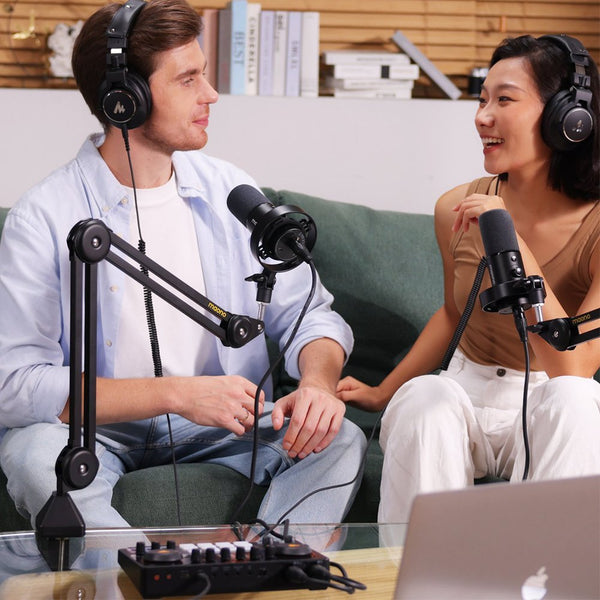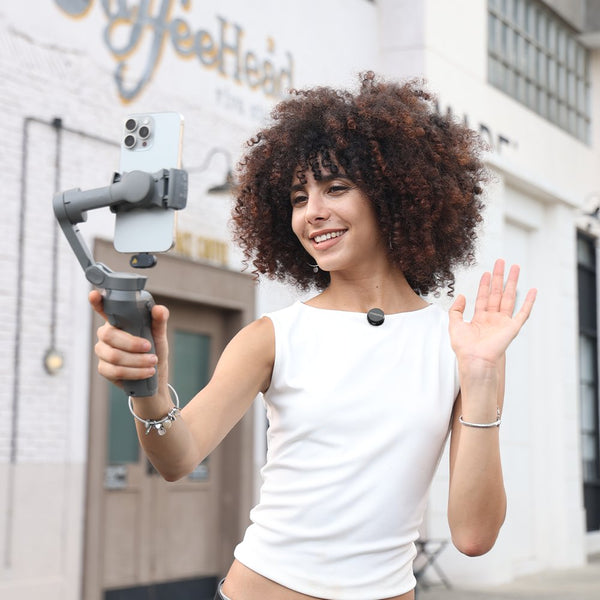Remember No Doubt, Reel Big Fish, or Put3ska? These were some of the most popular ska bands in the West and Asia during the '90s. Let’s take a trip down memory lane and find out if bands can use a condenser microphone to record live ska.
Ska is a lively and infectious genre of music that combines elements of Caribbean rhythms, American jazz, and rhythm and blues. Originating in Jamaica in the late 1950s, ska is known for its upbeat tempo, offbeat guitar strumming (often called "skanking"), punchy brass sections, and socially conscious lyrics. Over the decades, ska has evolved through different waves—from the Jamaican roots to the British 2 Tone movement, and the third-wave ska punk revival in the 1990s.
You might be wondering how ska differs from reggae, another Jamaican-born genre. While both styles share rhythmic similarities, reggae tends to be slower, more laid-back, and bass-heavy, with lyrics often rooted in spirituality and social justice. Ska, on the other hand, is typically faster, more energetic, and driven by prominent horn sections and walking basslines.
Today, many ska enthusiasts are bringing their passion home—literally—by recording covers and original tracks in home studios. With the rise of DIY music production and accessible gear, it’s easier than ever to create high-quality ska recordings from the comfort of your own space. In this guide, we’ll explore how to effectively record ska vocals and brass sections at home, using the right mics, setup, and strategies to produce polished tracks that stand out on YouTube and social media.

How to Mic Up a Ska Band in a Home Studio
Recording a ska band at home comes with unique challenges—particularly due to the range of instruments involved, including drums, guitars, keyboards, vocals, and of course, brass. In most home setups, you won't have a large soundproofed space or access to dozens of microphones. That's why smart mic placement is crucial.
For horns (trumpet, trombone, saxophone), use directional microphones to isolate each instrument. Ideally, place the mic about 6–12 inches away from the bell of the instrument, angled slightly off-center to avoid harshness.
For vocals, a cardioid condenser microphone is ideal. Position the mic about 6–8 inches from the singer, using a pop filter to reduce plosives. If your room is untreated, consider using reflection filters or recording near soft furnishings.
For guitars, whether electric or acoustic, mic the amp’s speaker cone (if electric) with a dynamic mic like the Shure SM57. For acoustic guitars, a small-diaphragm condenser works best placed at the 12th fret.
If you're limited on space or equipment, consider tracking instruments individually. Record the rhythm section first (drums, bass, rhythm guitar), then add vocals, keys, and horns.
Using a Condenser Microphone for Band Rehearsals and Covers
Is condenser microphone good? Absolutely. Condenser microphones are highly sensitive and ideal for capturing the dynamic range of ska vocals and instruments. They excel in studio environments but need controlled spaces for the best results.
During rehearsals, you can place a large-diaphragm condenser mic in the center of the room for a general capture. While this won’t isolate instruments, it’s a great way to record live energy. For tighter control, mic each instrument separately and layer the recordings in your DAW (Digital Audio Workstation).
When covering ska songs, record vocal and brass takes in separate sessions. This prevents bleed and allows for cleaner mixing. Use cardioid polar patterns to focus the mic’s pickup in one direction and minimize background noise.
Recording Ska Band Covers for YouTube: Audio Tips & Gear
When making ska covers for YouTube, audio quality is just as important as the performance and video. Invest in a solid audio chain: a good mic, an audio interface, and headphones.
Recommended basic gear:
-
Microphone: A recommended condenser microphone like the Maono PM500 for vocals and brass.
-
Audio Interface: Focusrite Scarlett 2i2 or MaonoCaster E2 (AME2) for multiple inputs and clean preamps.

-
DAW: Free options like Audacity, or more advanced ones like Reaper or Logic Pro.
-
Headphones: Closed-back headphones to avoid bleed during vocal tracking.
Ensure each track is recorded in 24-bit WAV format. Normalize your audio levels, and avoid clipping. For YouTube, export your final mix in stereo MP4 or MOV format with AAC audio at 320 kbps.
Latency and Sync Tips When Recording Multi-Instrument Ska
Latency can ruin your groove—especially in ska, where tight rhythm and horn stabs are crucial. To minimize latency:
-
Set your audio buffer size low (64–128 samples) in your DAW.
-
Use a direct monitoring audio interface.
-
Record tracks to a click track to maintain timing.
After recording, use your DAW’s grid to line up brass hits and rhythm sections. Group editing and nudging tracks slightly can correct timing errors while preserving the live feel.
When syncing video and audio for YouTube, use visual cues (like clapping at the start) to align tracks in your video editor.
Mixing Horn Sections with Vocals for Ska Covers
Mixing brass and vocals is a key step in capturing the ska sound. Horns should be bright and punchy but not overpower vocals. Follow these basic mix tips:
-
EQ: Roll off low frequencies below 100 Hz on brass to remove muddiness. Boost around 3–5 kHz for presence.
-
Compression: Light compression on horns to tame peaks. Use parallel compression for added punch.
-
Reverb: Use a short plate reverb on brass for space without making it washy. For vocals, try a medium room reverb with a touch of delay for depth.
-
Panning: Spread horns across the stereo field (e.g., trumpet left, sax center, trombone right) to add width. Keep lead vocals centered.
Balance is everything—vocals should always sit on top, with brass supporting the groove.
FAQ Section
1. Is it possible to record ska with brass instruments at home studio?
Yes! With proper mic placement, sound treatment (like curtains, rugs), and isolation techniques, you can capture brass clearly at home.
2. Can I use just one condenser microphone to record my whole ska band?
It's possible but not ideal. A single condenser mic can capture a live rehearsal, but individual mics provide better control and mix quality.
3. Is a condenser microphone good for live ska performance recordings?
Condenser mics can work live, but they’re sensitive to feedback. Dynamic mics like the SM58 or Beta 87A are better suited for live gigs.
4. How can I reduce background noise when recording a ska band at home?
Use cardioid condenser microphones, close-mic techniques, and soundproof the room with rugs, foam panels, and curtains.
5. What’s the best way to position a condenser mic for group ska vocals?
Place the mic at mouth level, 6–12 inches away, and have singers form a semicircle at equal distances. Use pop filters for each vocalist if possible.
6. Will Facebook or YouTube compress the sound quality of my ska recording?
Yes. These platforms compress audio to reduce file size. Always upload the highest quality audio you can to minimize the effects.
7. How can I make my ska covers sound more professional on YouTube?
Use a top condenser microphone, treat your room acoustically, and edit/mix your audio carefully. Lighting and framing also enhance your visual presentation.
8. How do I sync ska video and audio when posting covers online?
Record audio and video separately. Use a sync clap at the beginning. Align the audio in your video editor using waveform matching.
9. What budget condenser mic works best for ska covers?
The Maono PM500 is a recommended condenser microphone. It features a cardioid condenser microphone design, a large diaphragm for rich tone, low self-noise, and excellent clarity—perfect for ska vocals and brass alike.
Conclusion
Recording ska at home is not only possible—it’s an exciting way to keep the genre alive and introduce it to new audiences. By understanding ska’s unique elements—its bright horns, fast rhythms, and spirited vocals—you can capture its energy using budget-friendly gear and strategic setup.
Whether you're creating a polished YouTube cover, a rough rehearsal demo, or a full EP, tools like the Maono PM500, a reliable audio interface, and smart mixing techniques will elevate your sound. Ska is all about movement and connection, and with the right gear—including the best condenser microphone for your needs—your home studio can become a stage bursting with energy.
So pick up that mic, warm up those horns, and let the skanking begin—right from your living room.



